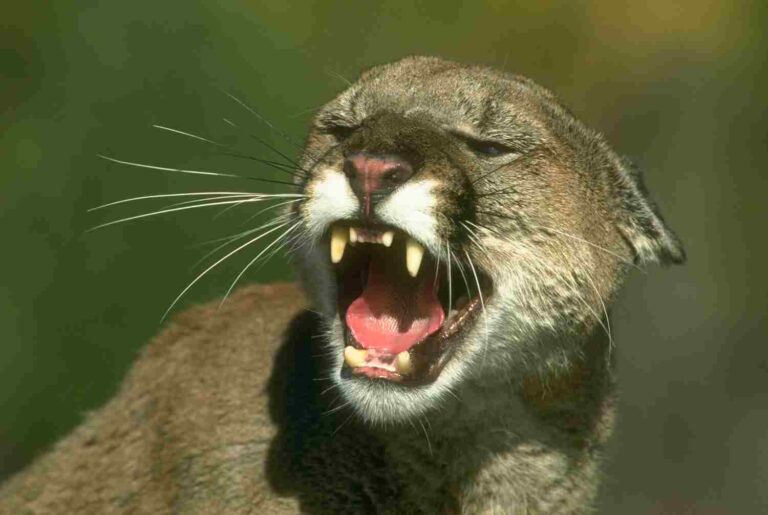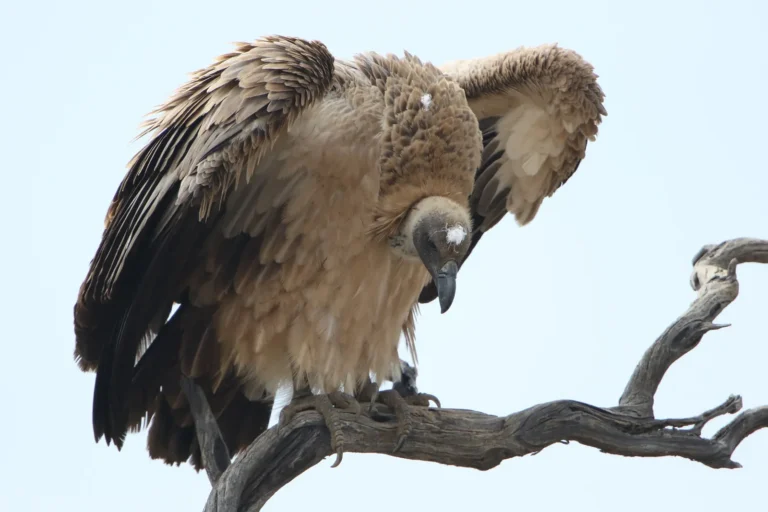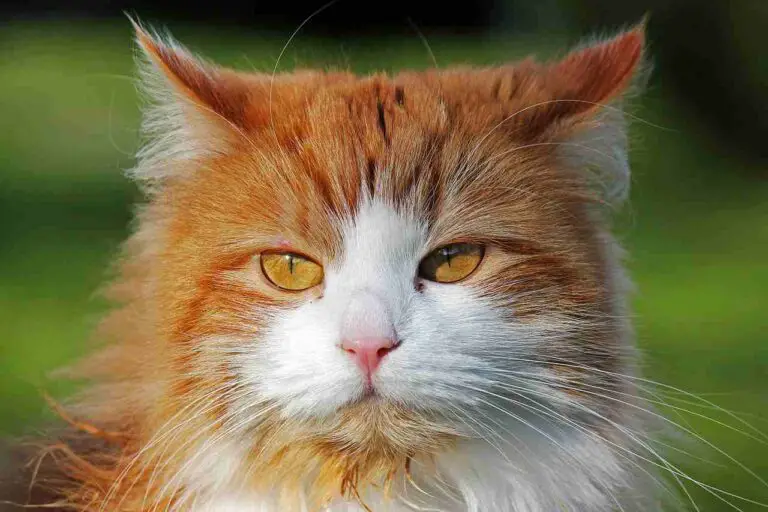Alligator Vs Cat Physiological and Ecological Comparison
In contemplating a potential face-off between an alligator and a cat, we navigate the contrasting characteristics of these creatures. Despite the significant advantages of the alligator in terms of size, weight, strength, and a powerful bite force, real-world dynamics often showcase the cat’s ability to avoid encounters. This analysis outlines these differences before exploring a confrontation, predicting that while the alligator would likely win in a direct fight, many encounters are avoided due to the cat’s superior speed and agility.
Alligator vs Cat Fight Prediction: Assessing the Potential Outcome in a Confrontation
In a hypothetical clash between an alligator and a cat, the outcome hinges on their inherent differences in size, strength, and agility. While the alligator holds substantial advantages in terms of size, weight, and bite force, the cat’s superior speed and agility become crucial factors, often allowing it to evade confrontations with the larger reptile.
I). Alligator’s Characteristics:
– Alligators are formidable reptiles, known for their large size, considerable weight, strength, and a powerful bite force. These traits make them apex predators in aquatic environments.
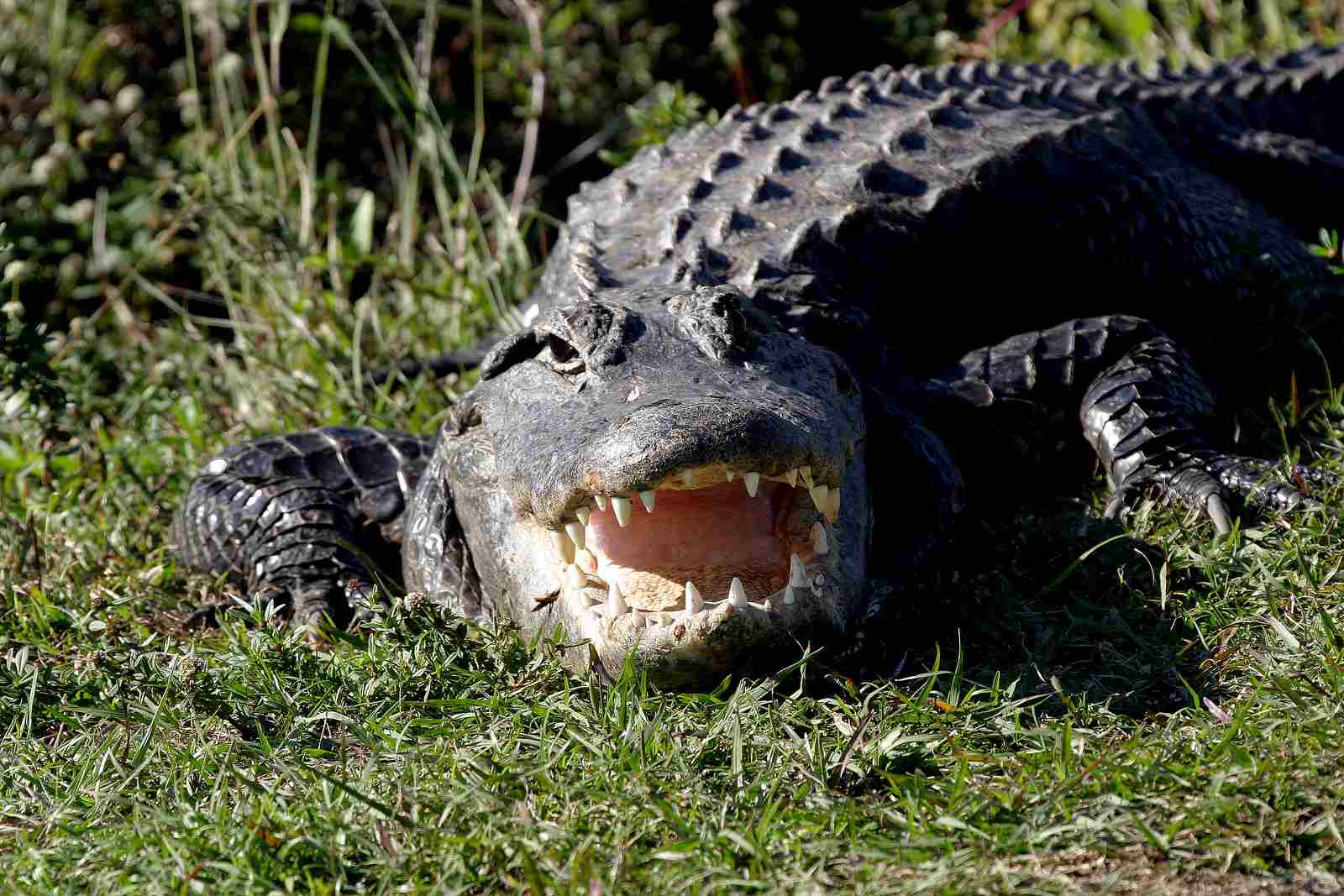
II). Cat’s Characteristics:
– Cats, on the other hand, are smaller, agile mammals characterized by their speed, reflexes, and climbing abilities. While not natural aquatic predators, they excel in terrestrial environments.
III). Size, Weight, and Strength Disparities:
– The alligator’s size, weight, and strength give it a significant advantage in a direct confrontation with a cat. The powerful bite force of the alligator further amplifies its prowess in such scenarios.
IV). Cat’s Speed and Agility:
– Cats are known for their exceptional speed and agility, traits that allow them to swiftly navigate their surroundings and escape potential threats. This agility becomes a key factor in avoiding encounters with larger predators like alligators.

V). Real-World Dynamics:
– While the alligator would likely prevail in a direct fight due to its size and strength, real-world encounters often unfold differently. Cats, with their speed and agility, can successfully evade and fend off alligators, leading to a significant number of avoided confrontations.
VI). Avoidance Strategies:
– Alligators often avoid pursuing cats directly, recognizing the feline’s ability to outmaneuver them. This avoidance strategy highlights the influence of speed and agility in shaping the dynamics of interspecies interactions.
VII). Overall Dynamics:
– In this scenario, while the alligator possesses clear physical advantages, real-world encounters are often influenced by the cat’s ability to avoid direct confrontations. The cat’s speed and agility play a crucial role in maintaining a level of safety, emphasizing the nuanced dynamics between these two diverse species.
*Details of Comparison
| Criteria | Alligator | Cat |
| Taxonomy | Reptilia, Crocodylia |
Mammalia, Carnivora
|
| Appearance | Scaly, armored skin |
Fur, retractable claws
|
| Size | Larger, 10-15 feet |
Generally smaller than alligators
|
| Weight | Heavier, 500-1,000 pounds (males) | Generally lighter |
| Bite Force (PSI) | Powerful, around 2,125 PSI |
Significantly less powerful
|
| Physical Offensive Adv. | Strong bite, stealthy |
Agility, sharp claws
|
| Physical Defensive Adv. | Tough, armored skin, aquatic escape |
Speed, agility, retractable claws
|
| Speed | Slower on land, swift in water |
Generally faster, especially big cats
|
| Agility | Agile in water, less on land |
Highly agile, versatile climbers
|
| Senses | Keen smell, sight, and low-frequency hearing |
Night vision, acute hearing
|
| Physical Capacity | Aquatic adaptation, strong bite |
Versatile climbers, agile hunters
|
| Habitat Preference(s) | Aquatic habitats |
Diverse, including forests and urban areas
|
| Tracks | Webbed footprints, tail drag |
Paw prints, retractable claws
|
| Lifespan | Longer, 30-50 years (varies by species) |
Shorter, typically 12-18 years
|
| Mode of Feeding | Carnivorous, ambush predator |
Carnivores, actively hunt
|
| Intelligence | Basic problem-solving, instinct-driven |
Higher cognitive abilities, especially big cats
|
| Social Behavior | Generally solitary, limited interactions |
Diverse, more complex in big cats
|
| Mode of Reproduction | Oviparous, lay eggs |
Viviparous, give birth to live young
|
| Parental Behavior | Limited care after hatching, protective nests |
Maternal care, nursing (especially domestic cats)
|
| Proximity to Humans | Found in or near water close to humans |
Domestic cats live closely with humans
|
| Behavior Toward Humans | Wary, can be aggressive if provoked |
Varied, domestic cats may be affectionate
|
| Danger Posed to Humans | Can be dangerous if provoked |
Generally not dangerous, except big cats
|
| Associated Precautions | Caution advised in known alligator areas |
General pet care, awareness of feral cats
|
| Conservation Status | Varies, American alligator: Least Concern |
Varies, domestic cats not globally assessed
|
Key Points
- Alligators are reptiles, while cats are mammals.
- Alligators have scaly skin, cats have fur.
- Alligators are generally larger and heavier.
- Alligators have a powerful bite, while cats use agility and claws.
- Cats, especially big cats, are generally faster and more agile.
- Cats have better night vision and acute hearing.
- Alligators are adapted to aquatic life, while cats are versatile climbers.
- Cats have a broader habitat range, including urban areas.
- Cats exhibit more complex social behaviors and higher cognitive abilities.
- Alligators lay eggs, cats give birth to live young.
- Cats, especially domestic cats, show more extended parental care.
- Both can be found in proximity to human-inhabited areas.
- Alligators can be dangerous if provoked, while domestic cats are generally not dangerous.
- Precautions vary, with alligator safety focusing on specific habitats and cat precautions related to domestic pet care.
- Conservation status varies among different alligator species and cat populations.
1. Taxonomy
Alligator:
Kingdom: Animalia
Phylum: Chordata
Class: Reptilia
Order: Crocodylia
Family: Alligatoridae
Genus: Alligator
Species: A. mississippiensis (American alligator) and A. sinensis (Chinese alligator)
Cat:
Kingdom: Animalia
Phylum: Chordata
Class: Mammalia
Order: Carnivora
Family: Felidae
Genus: Felis (domestic cat) and Panthera (big cats like lions and tigers)
Various species and subspecies within the genera
2. Appearance
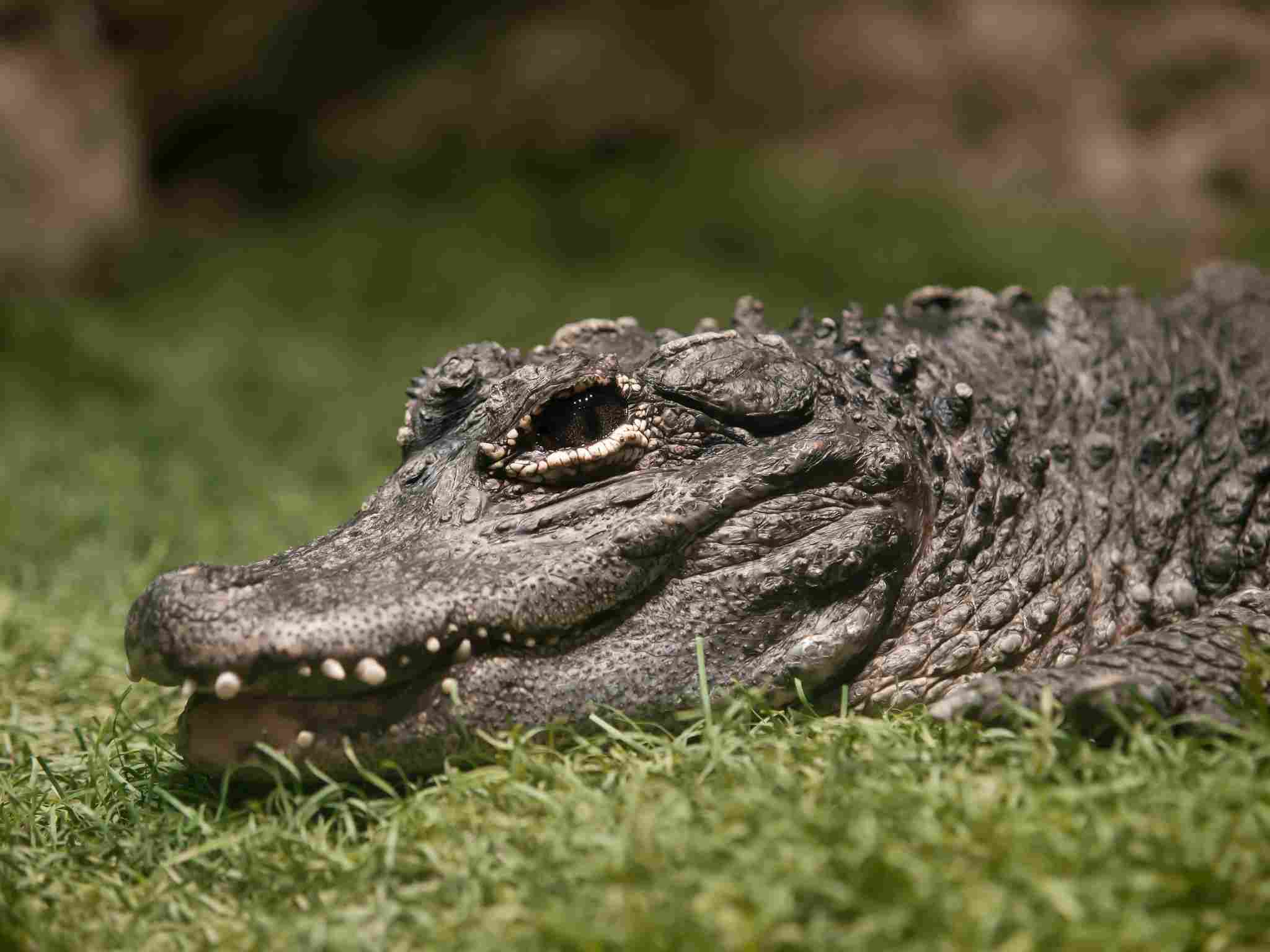
Alligator:
Rough, armored skin with bony plates called osteoderms.
Broad snout, U-shaped, designed for catching prey.
Webbed feet for efficient swimming.
Cat:
Covered in fur, varying in color and pattern.
Slender body, retractable claws, and a flexible tail.
Sharp teeth adapted for a carnivorous diet.
Comparison: Alligators have a more reptilian appearance with scaly skin, while cats have a furry and mammalian appearance.
Ecological Implications: Alligators’ appearance aids in thermoregulation in aquatic habitats, while the cat’s fur provides insulation for various environments.
3. Size
Alligator:
American alligator: Adult males 10-15 feet, females 8-10 feet.
Chinese alligator: Smaller, around 4-7 feet.
Cat:
Domestic cats: Vary greatly, typically 9-10 inches in height and 18 inches to 2 feet in length.
Big cats: Lions can reach over 8 feet in length.
Comparison: Alligators, especially American alligators, are generally larger than domestic cats but smaller than some big cat species.
Ecological Implications: Size impacts the role each species plays in their ecosystem, with larger alligators influencing aquatic ecosystems differently than smaller cats in terrestrial environments.
4. Weight
Alligator:
American alligator: Adult males 500-1,000 pounds, females 200-250 pounds.
Chinese alligator: Smaller, around 45-70 pounds.
Cat:
Domestic cats: Typically 5-20 pounds.
Big cats: Lions can weigh over 400 pounds.
Comparison: Alligators are generally much heavier than domestic cats but lighter than large big cat species.
Ecological Implications: Weight affects the impact of each species on their environment, influencing factors like predation and habitat modification.
5. Bite Force (PSI – Pounds per Square Inch)
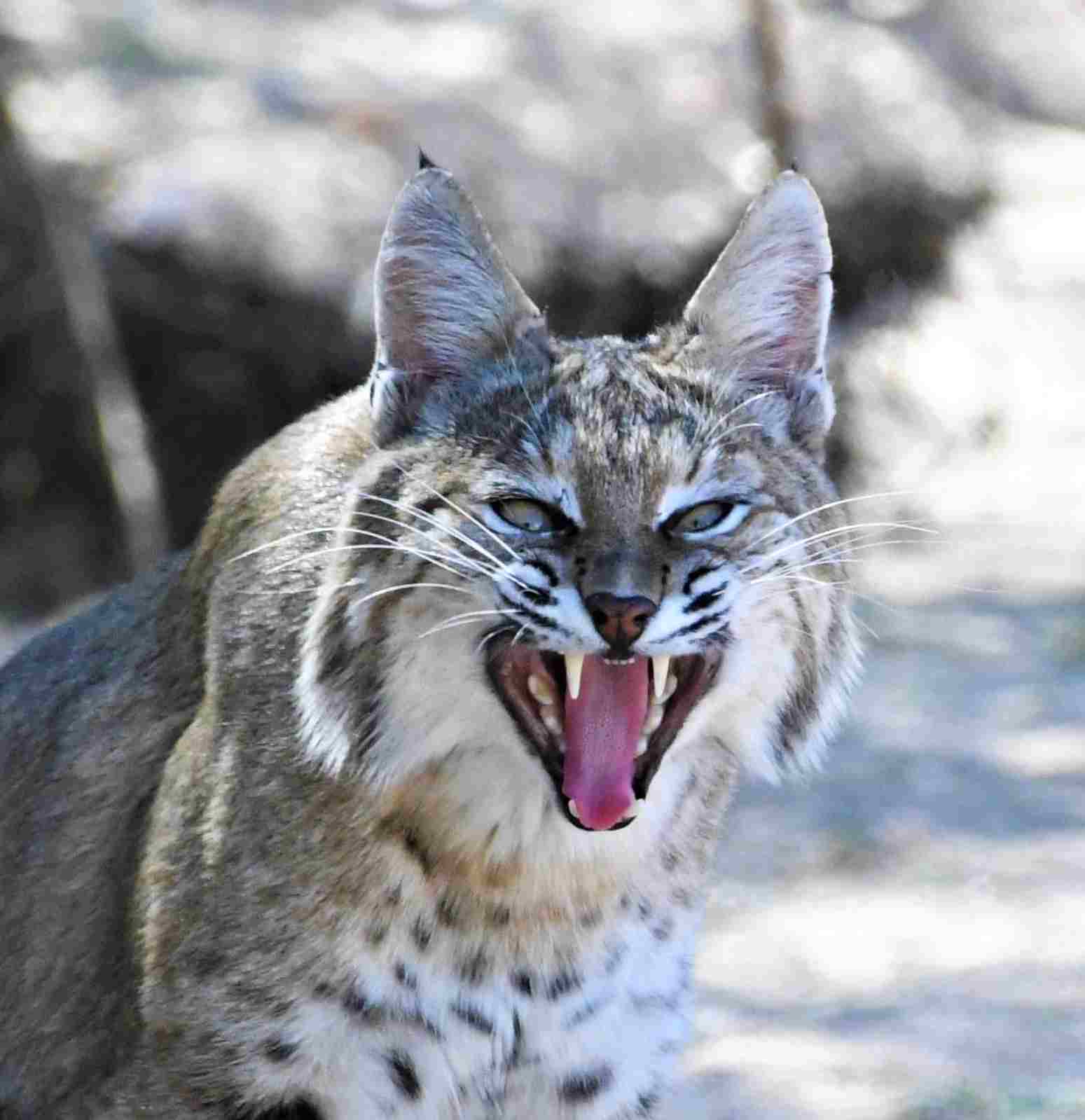
Alligator:
American alligator: Estimated at around 2,125 PSI.
Cat:
Domestic cats: Bite force varies, but generally much lower than alligators.
Big cats: Lions’ bite force is around 600-700 PSI.
Comparison: Alligators have a significantly stronger bite force compared to both domestic and big cats.
Ecological Implications: Bite force affects the prey each species can capture and the way they interact with their ecosystems.
6. Physical Offensive Advantages
Alligator:
Powerful jaws and strong bite force for effective prey capture.
Camouflaged appearance aids in ambushing prey.
Cat:
Sharp claws for climbing, hunting, and self-defense.
Agile and quick movements to outmaneuver prey.
Comparison: Alligators rely on a powerful bite and stealth, while cats use agility and sharp claws for offense.
Ecological Implications: These offensive adaptations impact the roles each species plays in their respective ecosystems.
7. Physical Defensive Advantages
Alligator:
Tough, armored skin provides protection against predators.
Quick retreat into water for escape.
Cat:
Speed and agility to evade threats.
Sharp retractable claws and teeth for self-defense.
Comparison: Alligators depend on their armored skin and aquatic escape, while cats use speed, agility, and sharp appendages for defense.
Ecological Implications: Defensive strategies influence interactions with predators and contribute to the overall balance in ecosystems.
8. Speed (Km/hour or Mile/hour)
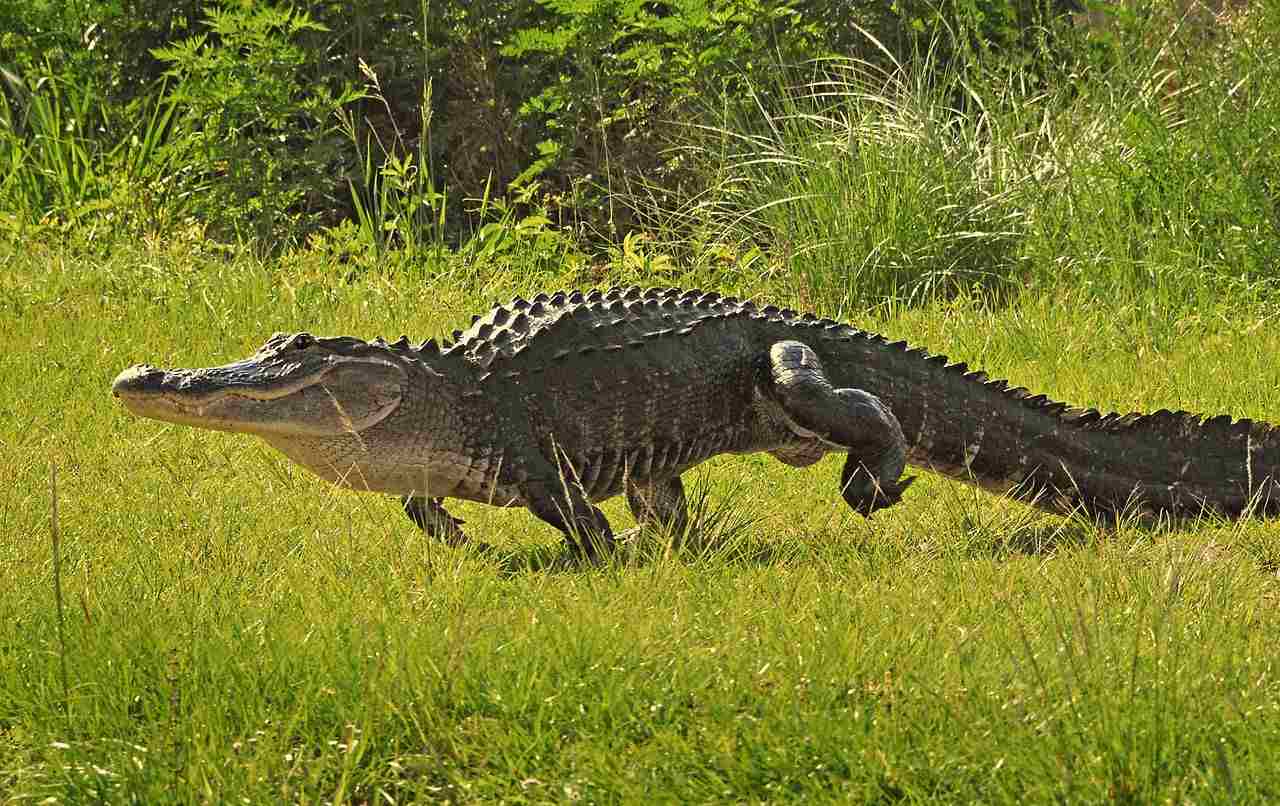
Alligator:
On land, can move at speeds up to 11 mph (18 km/h).
In water, can swim rapidly using their powerful tails.
Cat:
Domestic cats can run at speeds up to 30 mph (48 km/h).
Big cats like cheetahs can reach speeds over 60 mph (97 km/h).
Comparison: Cats, especially the big cat species, generally have higher land speeds compared to alligators.
Ecological Implications: Speed influences hunting efficiency and escape strategies in different environments.
9. Agility

Alligator:
Agile in water, using their streamlined bodies and tails for navigation.
Less agile on land due to their limb structure.
Cat:
Highly agile, able to climb trees and navigate various terrains with precision.
Excellent balance and coordination.
Comparison: Cats, with their flexible bodies and retractable claws, exhibit higher agility compared to alligators.
Ecological Implications: Agility affects hunting success, evasion of predators, and overall adaptability to diverse habitats.
10. Senses
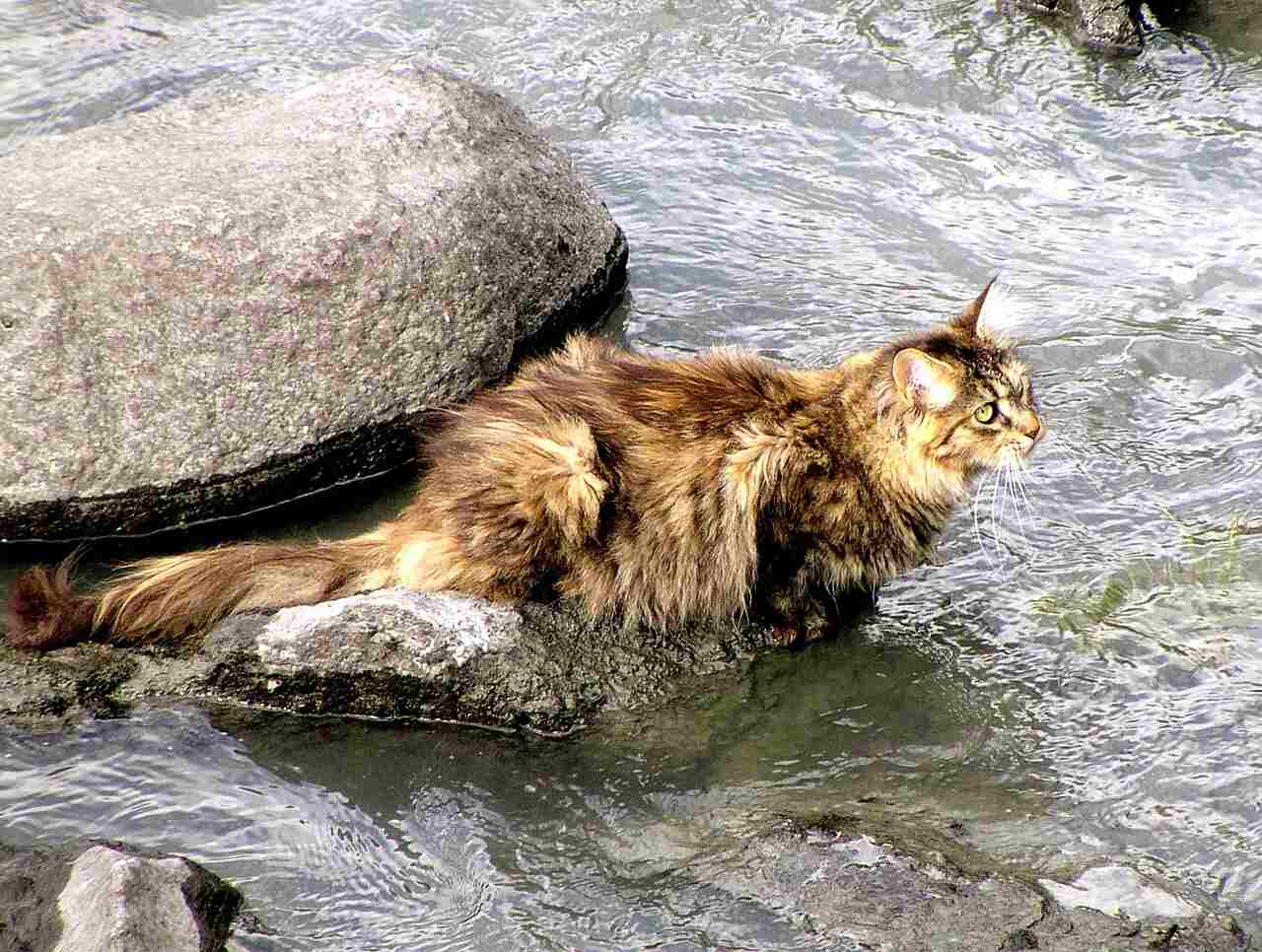
Alligator:
Excellent sense of smell for detecting prey.
Keen eyesight, especially in low light.
Sensitive hearing, mainly detecting low-frequency sounds.
Cat:
Exceptional night vision.
Highly developed sense of hearing.
Sensitive whiskers for navigation.
Comparison: Alligators rely on a combination of smell, sight, and hearing, while cats excel in night vision and acute hearing.
Ecological Implications: These sensory adaptations contribute to the efficiency of each species in hunting and navigating their environment.
11. Overall Physical Capacity
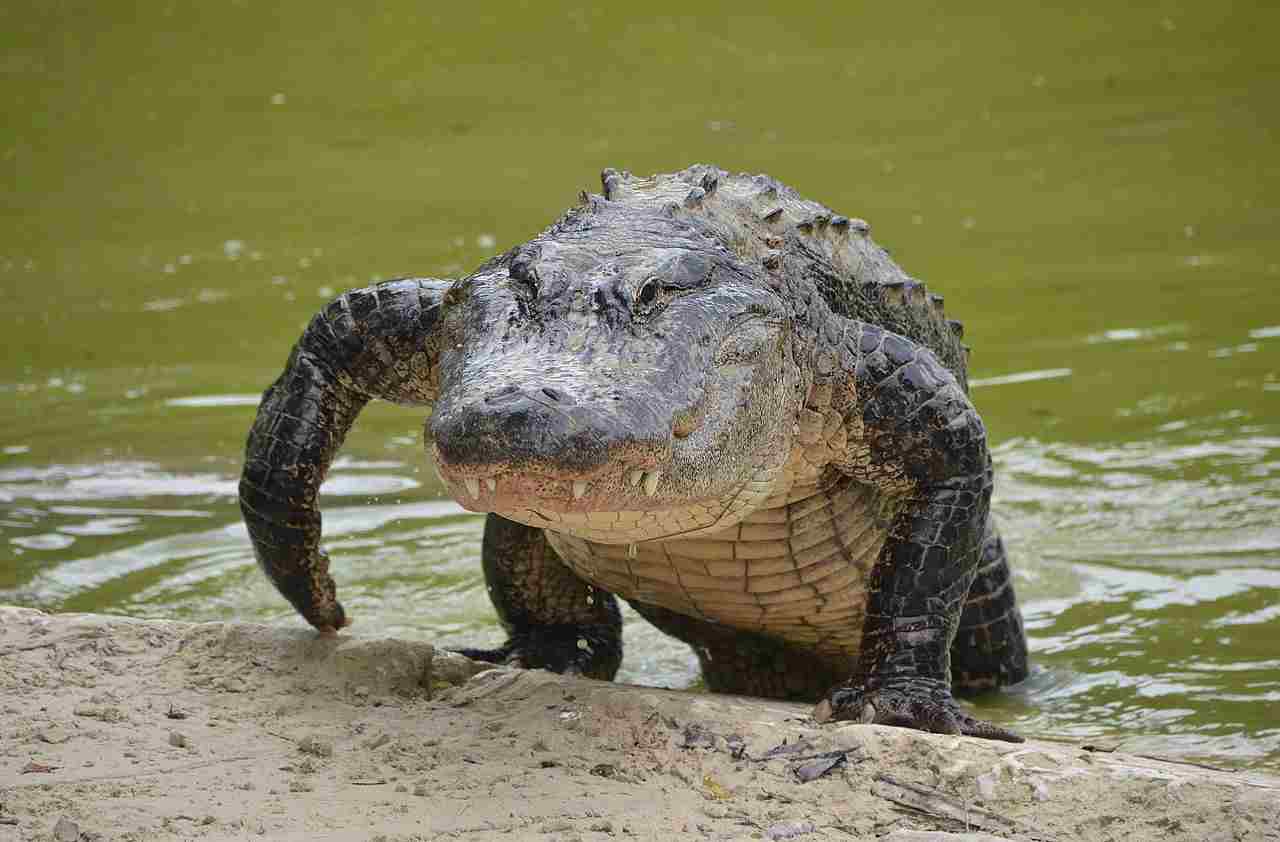
Alligator:
Well-adapted to aquatic life with strong swimming abilities.
Powerful bite and jaws for capturing and consuming prey.
Cat:
Versatile climbers and agile hunters.
Efficient predators on land.
Comparison: Alligators are specialized for aquatic environments, while cats exhibit adaptability to both terrestrial and arboreal habitats.
Ecological Implications: Physical capacity determines the range of ecological niches each species can occupy.
12. Habitat Preference(s)
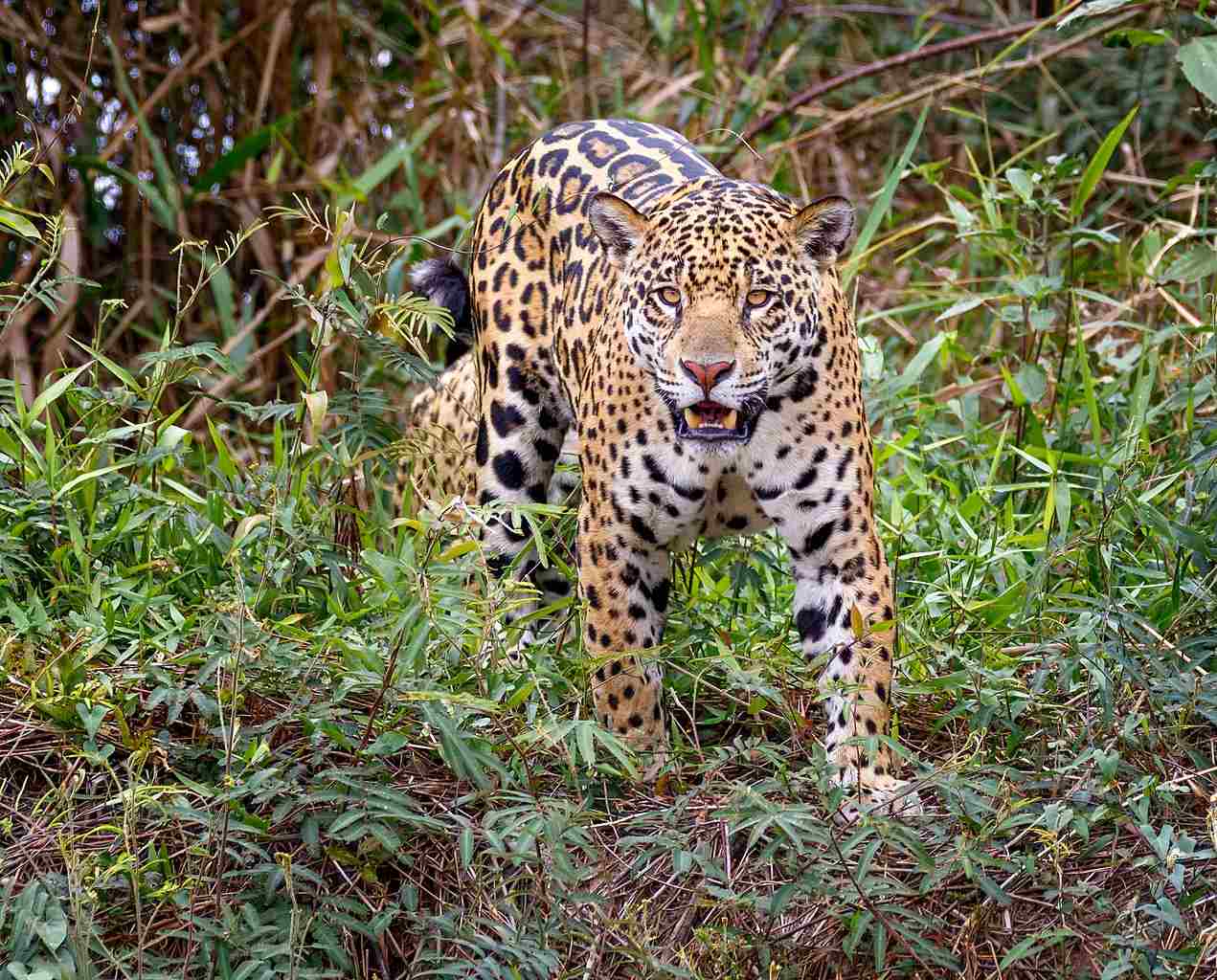
Alligator:
Aquatic habitats like swamps, lakes, and rivers.
Construct nests in close proximity to water.
Cat:
Diverse habitats including forests, grasslands, and urban areas.
Domestic cats often live in human homes.
Comparison: Alligators favor aquatic environments, whereas cats exhibit a broader range of habitat preferences.
Ecological Implications: Habitat preferences influence the ecosystems each species inhabits and their interactions with other organisms.
13. Tracks
Alligator:
Webbed footprints with distinct claw marks.
Tail drag mark may be visible.
Cat:
Paw prints with retractable claw marks.
Tail marks may be present but not as prominent.
Comparison: Alligator tracks show characteristics of their aquatic lifestyle, while cat tracks highlight their terrestrial and climbing behaviors.
Ecological Implications: Track identification aids in studying the distribution and behavior of these species in the wild.
14. Lifespan
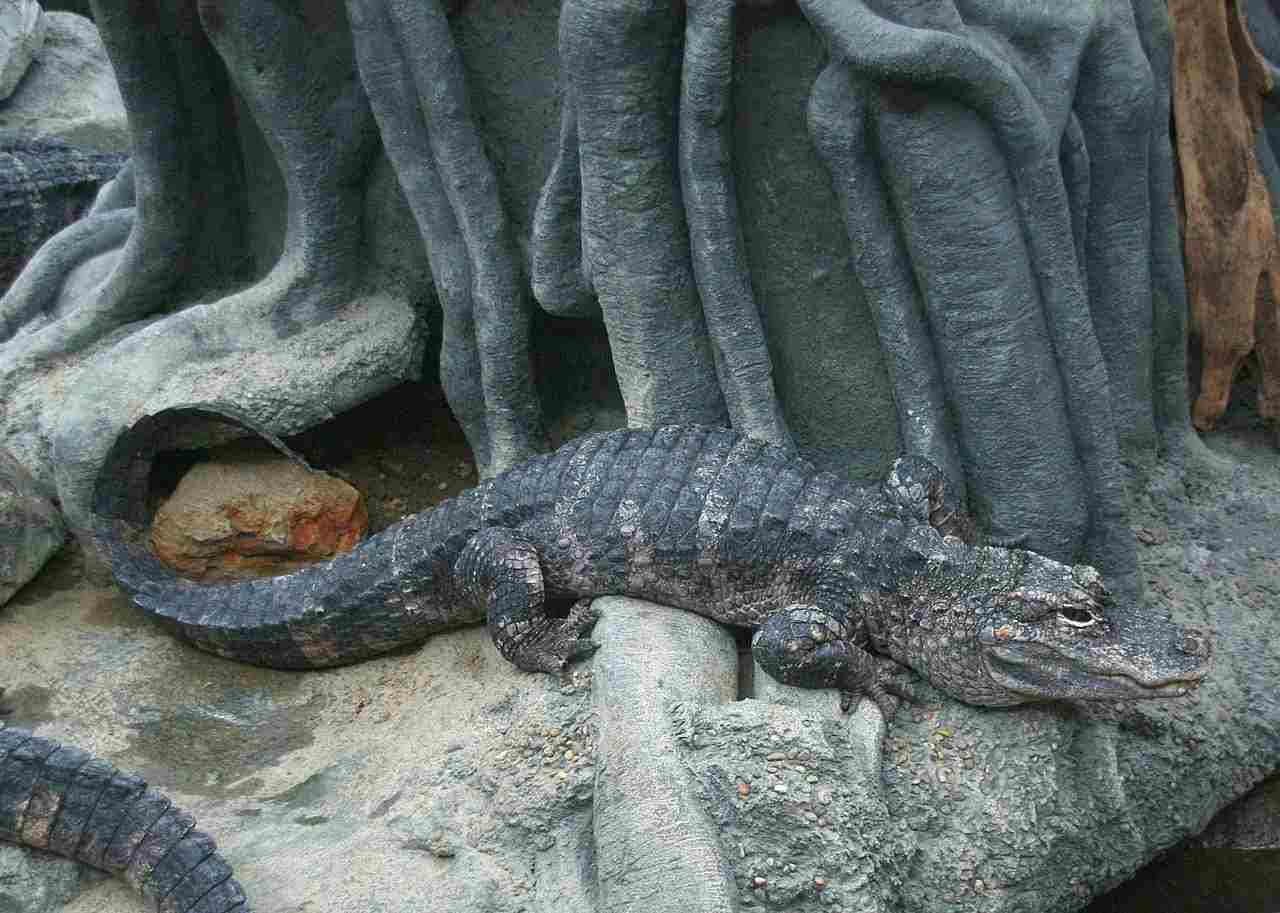
Alligator:
American alligator: 30 to 50 years in the wild.
Chinese alligator: Similar lifespan, possibly shorter.
Cat:
Domestic cats: Typically 12 to 18 years.
Big cats: Can vary, with lions living around 10 to 14 years in the wild.
Comparison: Alligators generally have a longer lifespan than domestic cats but may have similar lifespans to some big cat species.
Ecological Implications: Lifespan influences population dynamics, reproductive strategies, and ecological roles.
15. Mode of Feeding
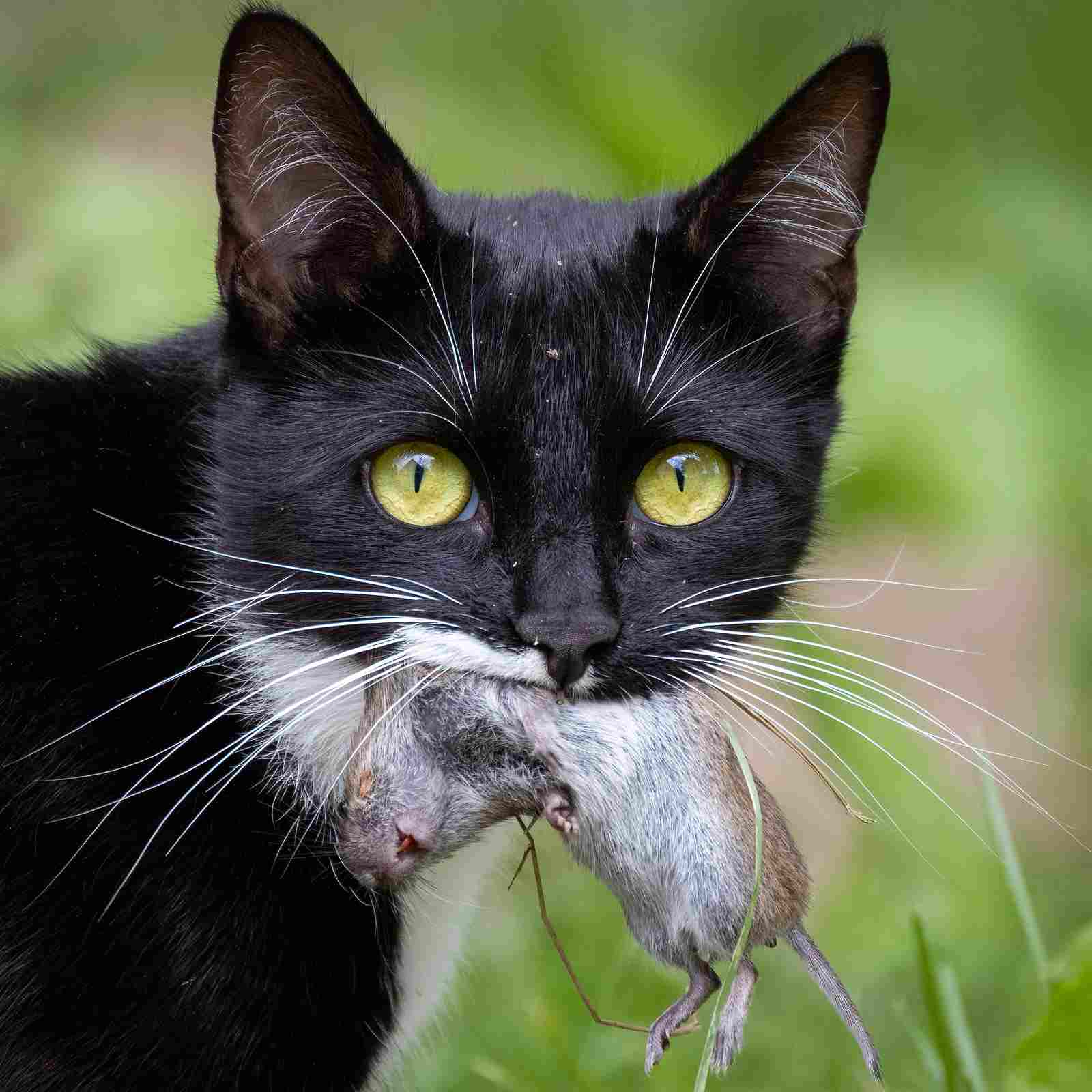
Alligator:
Carnivorous, feeding on fish, amphibians, birds, and mammals.
Ambush predators, often waiting for prey to approach.
Cat:
Carnivorous, primarily hunting small mammals, birds, and insects.
Domestic cats may also consume commercial cat food.
Comparison: Both species are carnivores, but alligators are ambush predators, while cats often actively hunt.
Ecological Implications: Feeding behaviors impact prey populations and contribute to ecosystem balance.
16. Intelligence
Alligator:
Display basic problem-solving abilities.
Instinct-driven behaviors with limited cognitive complexity.
Cat:
Domestic cats exhibit problem-solving skills and can learn through training.
Big cats show advanced problem-solving and hunting strategies.
Comparison: Cats, especially big cats, generally display higher cognitive abilities compared to alligators.
Ecological Implications: Intelligence influences adaptability and the ability to exploit ecological opportunities.
17. Social Behavior
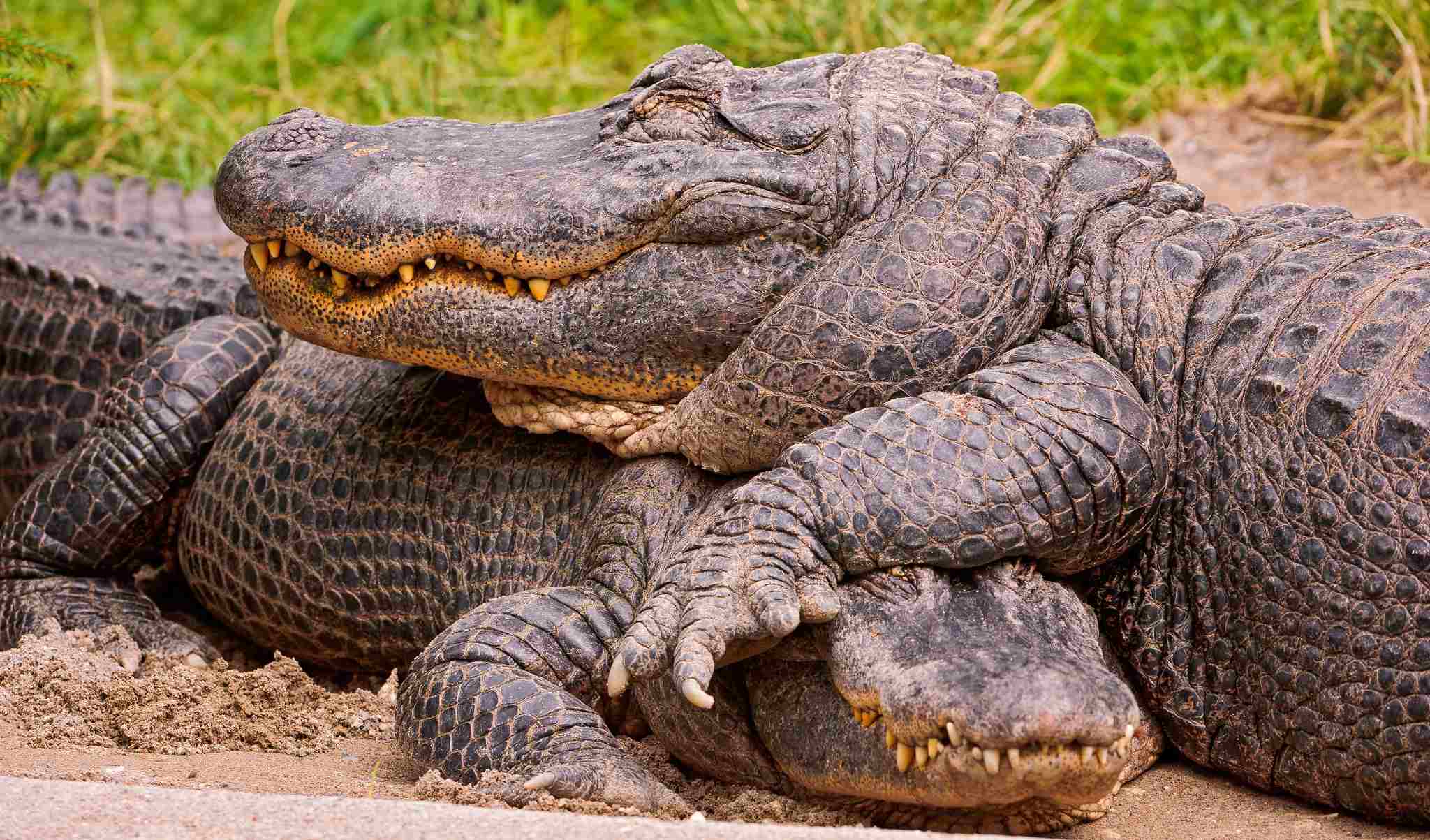
Alligator:
Generally solitary, except during the breeding season.
Limited social interactions.
Cat:
Domestic cats can be solitary or social, depending on individual preferences.
Big cats often live in social groups, especially females and their offspring.
Comparison: Cats, particularly big cats, show more diverse social behaviors than mostly solitary alligators.
Ecological Implications: Social behavior impacts mating systems, communication, and overall population dynamics in different ecosystems.
18. Mode of Reproduction
Alligator:
Oviparous, laying eggs in nests constructed from vegetation.
Temperature-dependent sex determination in some species.
Cat:
Viviparous, giving birth to live young.
Gestation period varies among species, generally around 60 to 70 days for domestic cats.
Comparison: Alligators lay eggs and use external sources for incubation, while cats give birth to live young.
Ecological Implications: Reproductive strategies impact population dynamics and species interactions in their respective ecosystems.
19. Parental Behavior
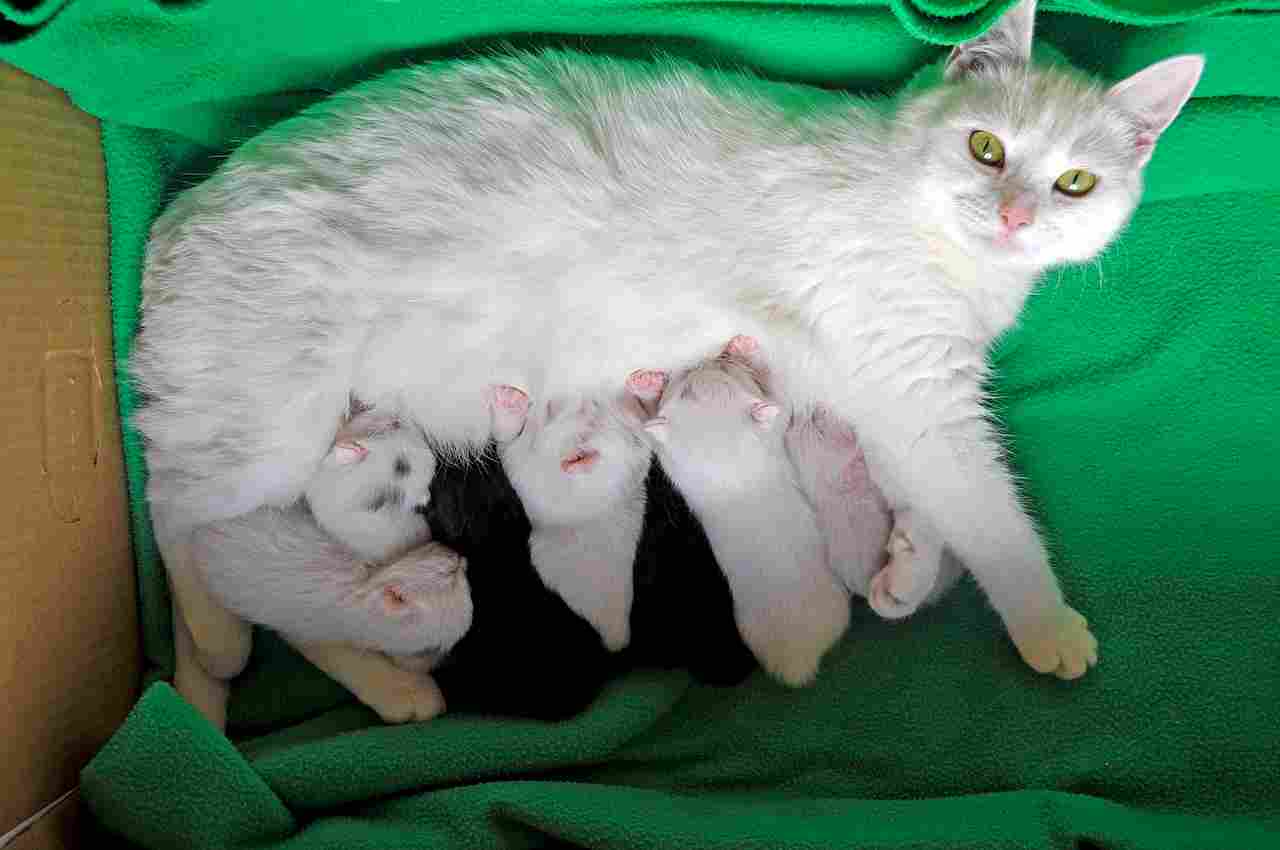
Alligator:
Protective of nests during incubation.
Limited parental care after hatching.
Cat:
Domestic cats exhibit maternal care, nursing, and protection of kittens.
Big cats may show varying levels of parental involvement.
Comparison: Cats, especially domestic cats, exhibit more extended parental care compared to alligators.
Ecological Implications: Parental behavior influences the survival and development of offspring, impacting population dynamics.
20. Proximity to Human-Inhabited Areas
Alligator:
Often found in or near freshwater areas close to human habitats.
Encounters may increase in urbanized regions.
Cat:
Domestic cats live in close association with humans.
Feral cats may inhabit urban, suburban, or rural areas.
Comparison: Both alligators and cats, especially domestic cats, can be found in proximity to human-inhabited areas.
Ecological Implications: Human proximity can lead to conflicts and impacts on the behavior and survival of these species.
21. Behavior Toward Humans

Alligator:
Generally wary of humans but can become aggressive if provoked.
May approach human-inhabited areas in search of food.
Cat:
Domestic cats may exhibit a range of behaviors from affectionate to independent.
Feral cats can be wary of humans and may display defensive behaviors.
Comparison: Both species may exhibit varied behaviors in response to human presence, with alligators potentially posing more significant risks.
Ecological Implications: Human-wildlife interactions can impact the behavior, survival, and conservation of these species.
22. Danger Posed to Humans
Alligator:
Can pose a threat if cornered or provoked.
Infrequent but potentially dangerous encounters, especially in regions with a high alligator population.
Cat:
Domestic cats generally pose no direct threat.
Big cats can be dangerous if approached or threatened.
Comparison: Alligators, especially in specific contexts, may pose a more direct threat to humans than domestic cats.
Ecological Implications: Understanding potential dangers is crucial for coexisting with wildlife and implementing conservation measures.
23. Associated Precautions
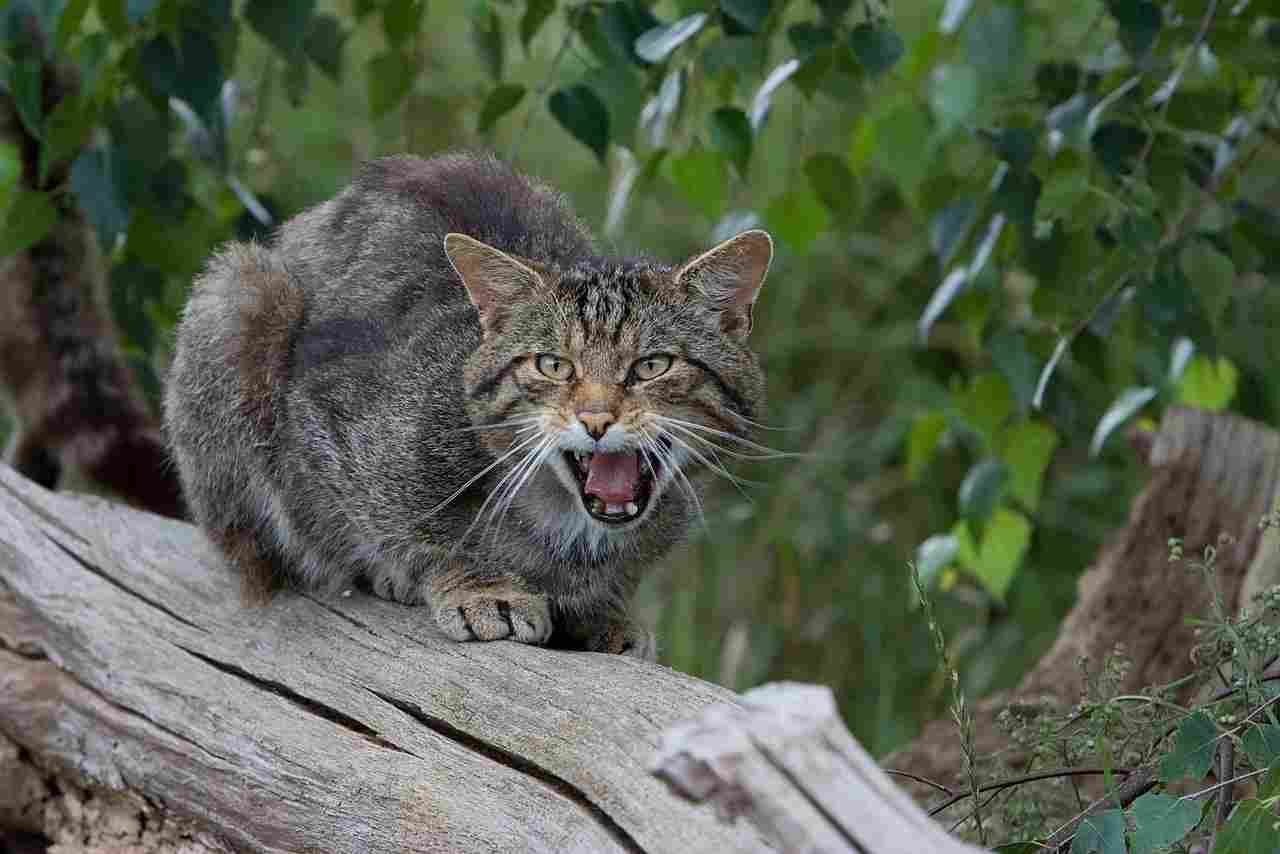
Alligator:
Caution advised in areas with known alligator populations.
Avoid feeding alligators to prevent habituation.
Cat:
General precautions for pet care and safety, such as vaccinations and spaying/neutering.
Awareness of potential conflicts with wildlife, including feral cats.
Comparison: Precautions differ, with alligator safety focusing on specific habitats, while cat precautions are mainly related to domestic pet care.
Ecological Implications: Responsible human behavior minimizes negative impacts on both wildlife and domestic animals.
24. Conservation Status
Alligator:
American alligator: Least Concern.
Chinese alligator: Endangered.
Cat:
Domestic cats: Not assessed on a global scale.
Some big cat species are threatened or endangered.
Comparison: Conservation status varies among different alligator species and cat populations.
Ecological Implications: Conservation efforts are essential to maintaining biodiversity and ecological balance.
Summary of Comparison
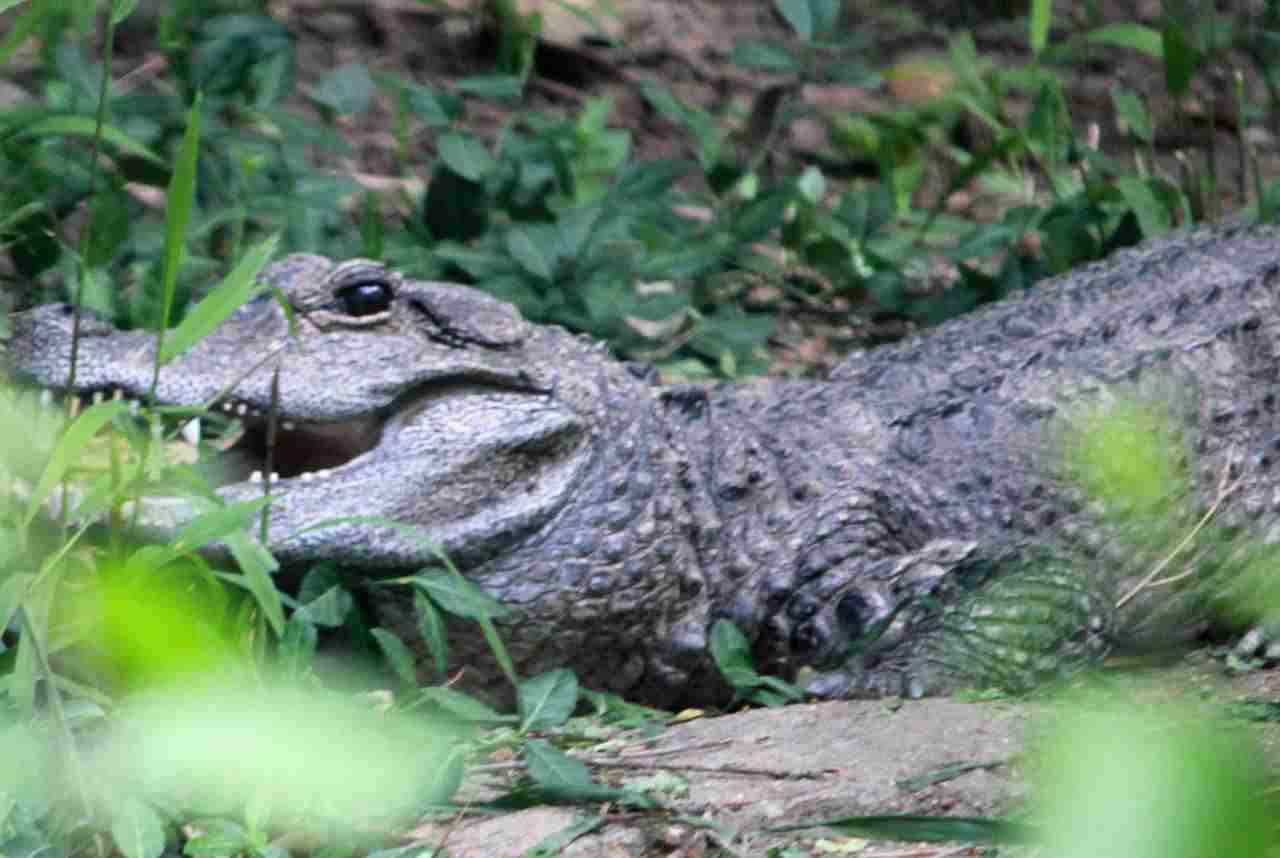
Taxonomy:
Alligators belong to the class Reptilia, order Crocodylia, while cats are mammals in the order Carnivora.
Appearance:
Alligators have scaly, armored skin, while cats have fur and retractable claws.
Size:
Alligators are generally larger, with American alligators reaching 10-15 feet, compared to domestic cats that are typically smaller.
Weight:
Alligators are heavier, with males weighing 500-1,000 pounds, while domestic cats generally weigh 5-20 pounds.
Bite Force (PSI):
Alligators have a powerful bite force around 2,125 PSI, significantly stronger than cats.
Physical Offensive Advantages:
Alligators rely on a strong bite and stealth, while cats use agility and sharp claws.
Physical Defensive Advantages:
Alligators have tough, armored skin and aquatic escape, while cats use speed, agility, and retractable claws.
Speed:
Cats, especially big cats, generally have higher land speeds compared to alligators.
Agility:
Cats, with flexible bodies and retractable claws, exhibit higher agility compared to alligators.
Senses:
Alligators rely on smell, sight, and hearing, while cats excel in night vision and acute hearing.
Overall Physical Capacity:
Alligators are adapted to aquatic life, while cats are versatile climbers and agile hunters on land.
Habitat Preference(s):
Alligators favor aquatic habitats, while cats have a broader range, including forests, grasslands, and urban areas.
Tracks:
Alligator tracks show characteristics of their aquatic lifestyle, while cat tracks highlight terrestrial and climbing behaviors.
Lifespan:
Alligators generally have a longer lifespan than domestic cats, with a range of 30-50 years.
Mode of Feeding:
Both are carnivores, but alligators are ambush predators, and cats often actively hunt.
Intelligence:
Cats, especially big cats, generally display higher cognitive abilities compared to alligators.
Social Behavior:
Cats, particularly big cats, show more diverse social behaviors than mostly solitary alligators.
Mode of Reproduction:
Alligators lay eggs, while cats give birth to live young.
Parental Behavior:
Cats, especially domestic cats, exhibit more extended parental care compared to alligators.
Proximity to Human-Inhabited Areas:
Both species can be found in proximity to human-inhabited areas.
Behavior Toward Humans:
Both species may exhibit varied behaviors in response to human presence.
Danger Posed to Humans:
Alligators, especially in specific contexts, may pose a more direct threat to humans than domestic cats.
Associated Precautions:
Precautions differ, with alligator safety focusing on specific habitats, while cat precautions are mainly related to domestic pet care.
Conservation Status:
Conservation status varies among different alligator species and cat populations.
Conclusion
I. Similarities
Both alligators and cats are carnivores with specific adaptations for hunting.
They can be found in close proximity to human-inhabited areas, leading to potential human-wildlife conflicts.
II. Differences
Alligators are reptiles with an emphasis on aquatic habitats, while cats are mammals with a broader range of habitats.
Cats, especially big cats, exhibit more complex social behaviors and higher cognitive abilities compared to alligators.
